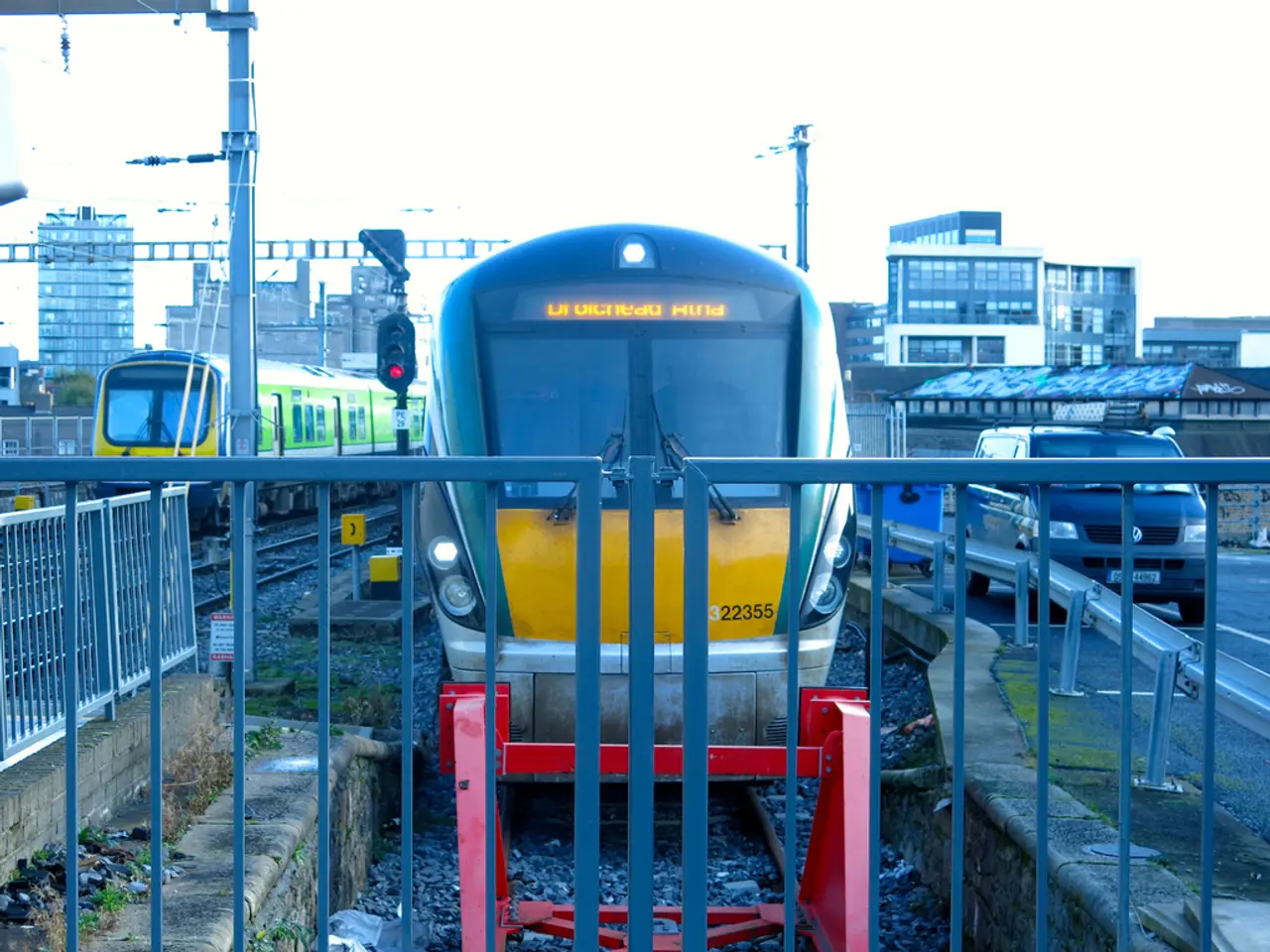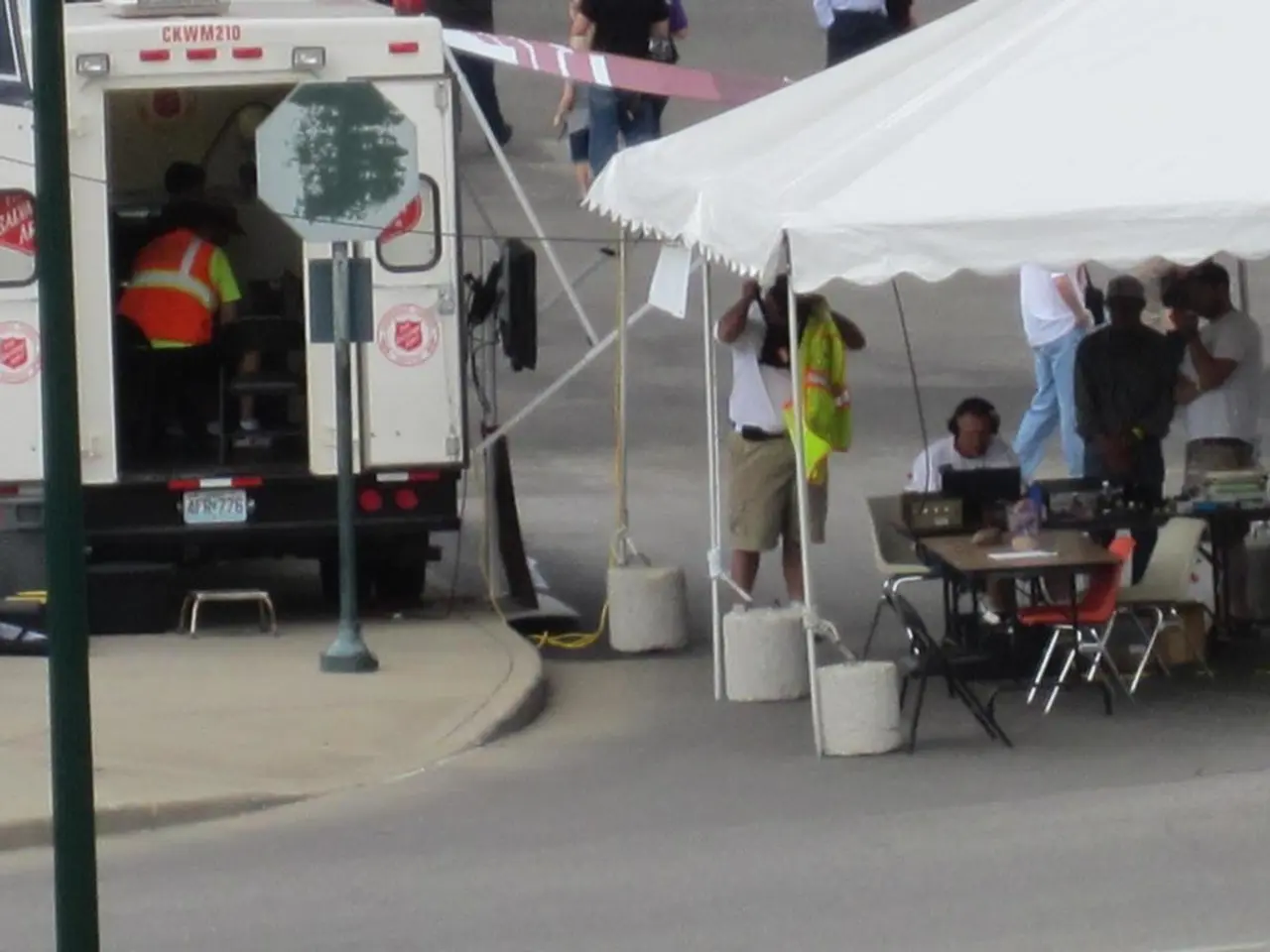Trump Refuses Financial Obligations for High-Speed Rail in Central California, Leaving Voters in the Lurch
The California High-Speed Rail project, initially conceived to reduce travel time between San Francisco and Los Angeles to less than three hours, has embarked on a journey of its own, marked by delays, cost overruns, and political tussles.
The project, originally budgeted at $33 billion, has seen its cost more than triple since its inception in 2008, and is now slated for completion in 2033 for an initial segment connecting two smaller cities in the Central Valley. This segment, a 119-mile stretch connecting Bakersfield and Merced, is expected to be operational by 2033 [1].
The project has faced significant challenges, including inflation, lawsuits over land acquisitions, lengthy environmental reviews, and repeated funding disputes. One of the most pressing issues is the safety concern at the Rosecrans and Marquardt crossing, where three deaths and 19 other accidents have occurred in the last three years [2]. A grade separation project is underway to transform California's most hazardous train crossing.
The project has also become a point of political contention. In January 2025, Governor Gavin Newsom visited Bakersfield to tout progress on the project, but just a few months later, he discussed plans to scale back the project during his first State of the State address [3]. This decision was in response to the Trump administration's withdrawal of $4 billion in federal funding, a move criticised by both the governor and President Donald Trump [4].
Despite these challenges, the California High-Speed Rail Authority is seeking private investment to help cover the project's costs [1]. The authority is also currently engaged in the California State Rail Plan, a comprehensive plan that will provide the framework for California's rail network for the next 20 years [5]. Public input is being sought to determine priorities for this plan.
The New York Times reported that an audit of California's spending of a $3.1 billion federal grant issued under the Biden administration is currently ongoing [6]. This audit comes as the project continues to move forward, with construction on the initial segment currently underway.
As the California High-Speed Rail project navigates these challenges, it remains a testament to the ambition and determination of Californians to improve their infrastructure and connect their cities in innovative ways. Whether the project will ultimately deliver on its promises remains to be seen, but one thing is certain: the journey is far from over.
[1] California High-Speed Rail Authority. (2025). California High-Speed Rail Project. Retrieved from https://www.cahsr.ca.gov/
[2] Los Angeles Times. (2023). Deadly accidents at Rosecrans and Marquardt crossing highlight safety concerns for California's high-speed rail project. Retrieved from https://www.latimes.com/
[3] San Francisco Chronicle. (2025). Governor Newsom discusses plans to scale back California high-speed rail project. Retrieved from https://www.sfchronicle.com/
[4] Associated Press. (2025). California sues Trump administration over high-speed rail funding. Retrieved from https://apnews.com/
[5] California Department of Transportation. (2025). California State Rail Plan. Retrieved from https://www.dot.ca.gov/
[6] The New York Times. (2025). Audit of California's high-speed rail spending underway. Retrieved from https://www.nytimes.com/
- The escalating costs and delays of the California High-Speed Rail project have raised concerns about the project's future, with some viewing it as a prime example of problems faced by large-scale infrastructure projects.
- The project's impact on the environment, while initially considered minimal, has become a subject of community news and environmental debates, with concerns about habitat destruction and the project's carbon footprint.
- The political maneuvering surrounding the project, particularly the funding disputes and the scaling back of the project by Governor Gavin Newsom, have highlighted the complexities of policy-and-legislation and the role of politics in major infrastructure projects.
- As the project continues, migration patterns within California may be influenced by the development of the high-speed rail network, with potential changes in commuting options and accessibility impacting general-news topics such as housing prices and urban planning.








